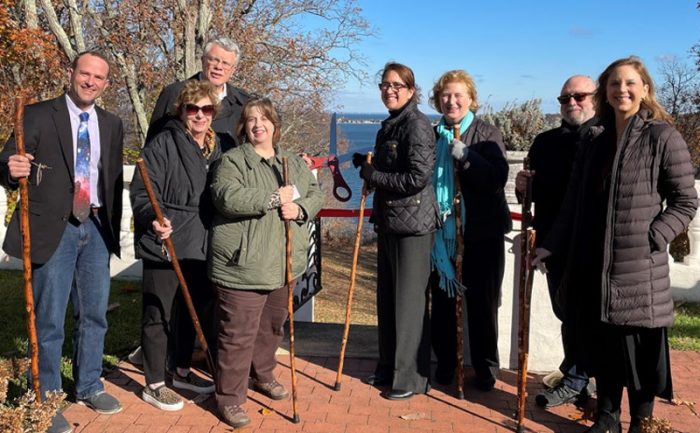Vanderbilt Museum in Centerport opens new Solar System Hiking Trail

Century-old estate trail reclaimed, enhanced
William K. Vanderbilt II built a hiking trail in the 1920s on his Eagle’s Nest waterfront estate in Centerport that became overgrown and disappeared into the forest. The Suffolk County Vanderbilt Museum, located at Eagle’s Nest, has reclaimed the trail, and held a grand opening in November. Major project donors and museum trustees attended the event in the Rose Garden, which is also the trailhead.
Now called the Solar System Hiking Trail, the course includes a scale model of the Solar System, which complements STEM and astronomy-education programs offered by the Charles and Helen Reichert Planetarium.
“This is a long-awaited day. We are grateful to Christine Berardi and the National Grid Foundation for 10 years of outstanding, unwavering support and to Vanderbilt trustee Laura Gerde and her husband, Eric Gerde. Their ongoing contributions to our STEM programming include the exhibits in the Planetarium lobby. Their steadfast support makes it possible for the Museum to expand its work as a leader in astronomy and science education,” said Elizabeth Wayland-Morgan, executive director of the Vanderbilt Museum.
Other project donors are Marilyn and Russell Albanese, BAE Systems, Farrell Fritz Attorneys, Northwell Health, People’s United Bank, and PFM Asset Management.
Wayland-Morgan said Dave Bush, the director of the Charles and Helen Reichert Planetarium, “single-handedly created the Solar System trail — I don’t think there’s a program like this anywhere else.” She also thanked Jim Munson, the museum’s operations supervisor. “Jim noticed portions of the original trail and saw its potential. He said let’s do this.”
Bush said that scale models of the solar system have been created before at museums, science centers, and universities. “But the Vanderbilt’s trail is likely the only one that traverses a one-mile hiking trail with hundreds of feet in elevation changes,” he said. “It is an opportunity for visitors to learn about the bodies in our solar system and its vast scale, and to see and experience parts of the museum property that have never been seen before by the public.”






